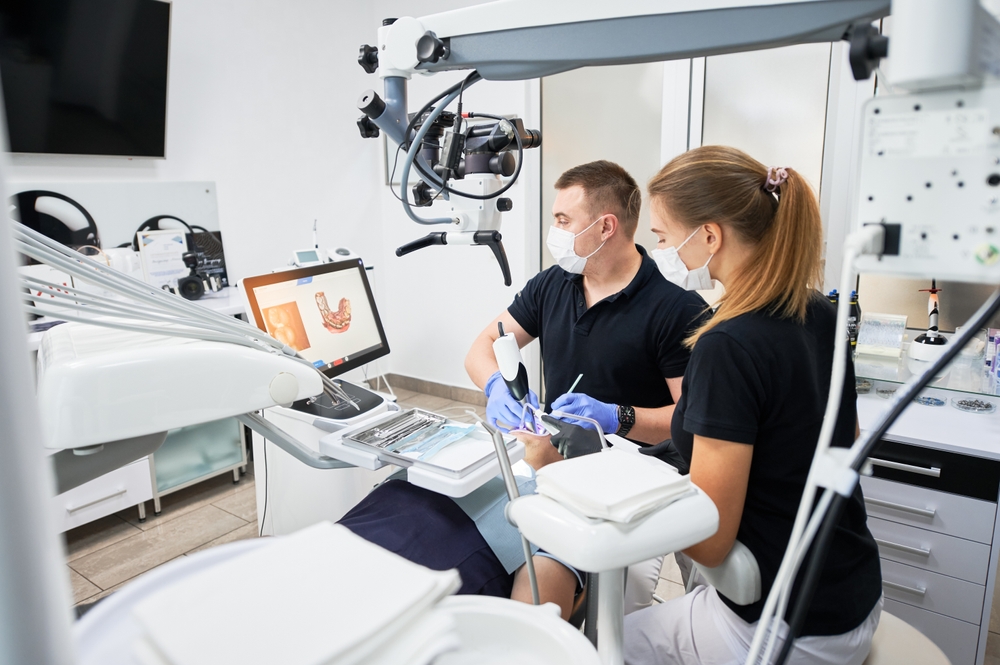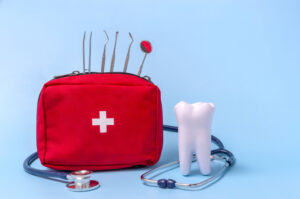Dental emergencies can be stressful and confusing, especially when you’re unsure whether your situation requires immediate attention. Misconceptions about what constitutes a dental emergency can lead to delayed treatment, worsening conditions, and unnecessary panic. In this article, we will debunk common myths about dental emergencies and clarify what truly requires urgent care to help you make informed decisions for your oral health.
Common Myths About Dental Emergencies
There are several misconceptions surrounding dental emergencies that can cause confusion. Let’s address some of the most prevalent myths:
Myth 1: Toothaches Are Always a Dental Emergency
Many people believe that any toothache is a dental emergency. However, not all toothaches require immediate attention. A toothache can result from various causes, such as tooth decay, gum disease, or even sinus infections. While persistent or severe pain should be evaluated by a dentist, occasional mild discomfort might be managed with over-the-counter pain relievers and proper oral hygiene until you can schedule an appointment.
Myth 2: Only Visible Injuries Are Emergencies
Visible injuries like chipped or broken teeth are often considered dental emergencies, but hidden issues can be just as serious. Conditions like internal tooth fractures, abscesses, or severe gum infections might not be immediately visible but can lead to significant complications if left untreated. It’s essential to seek professional evaluation even if you don’t see obvious damage to your teeth.
Myth 3: Dental Emergencies Are Always Painful
While many dental emergencies are accompanied by pain, some may not be immediately painful. For example, a knocked-out tooth may not cause pain if nerve endings aren’t exposed, but it requires urgent care to increase the chances of saving the tooth. Similarly, a loose tooth in a child can be distressing even without pain and should be handled promptly.
Myth 4: You Can Handle All Emergencies at Home
Attempting to manage a dental emergency entirely at home can sometimes do more harm than good. While certain first aid measures can help stabilise the situation temporarily, professional dental care is often necessary to address the root cause and prevent further damage. For instance, trying to reinsert a knocked-out tooth yourself without proper guidance can reduce the likelihood of successful reimplantation.
Myth 5: Dental Emergencies Only Happen to Adults
Children are also susceptible to dental emergencies, such as knocked-out teeth from falls or sports injuries. It’s crucial to know how to respond to dental injuries in children to ensure their oral health and prevent long-term issues.
What Really Counts as a Dental Emergency
Understanding what constitutes a dental emergency is key to knowing when to seek immediate care. Here are some situations that typically require urgent attention:
1. Knocked-Out Tooth (Avulsed Tooth)
A knocked-out tooth is a severe dental emergency. The chances of successfully reimplanting the tooth decrease significantly after the first 30 minutes. If a tooth is knocked out, handle it by the crown (top part) without touching the root, rinse it gently if dirty, and try to reinsert it into the socket. If reinsertion isn’t possible, place the tooth in milk or a saline solution and seek immediate dental care.
2. Cracked or Broken Tooth
A cracked or broken tooth can expose the nerve endings, leading to intense pain and increased risk of infection. If you have a cracked or broken tooth, rinse your mouth with warm water, apply a cold compress to reduce swelling, and visit a dentist promptly to prevent further damage.
3. Severe Toothache with Swelling
A severe toothache accompanied by swelling can indicate an abscess, which is a bacterial infection that requires urgent treatment. Left untreated, an abscess can spread to other parts of the body, posing serious health risks. Rinse your mouth with warm salt water, apply a cold compress to the face, and contact a dentist immediately.
4. Loose Tooth in a Child
A loose tooth in a child can be a dental emergency, especially if it’s due to trauma. Prompt dental care can help save the tooth and ensure proper alignment during the healing process. Encourage the child to avoid eating hard foods and visit a dentist as soon as possible.
5. Objects Stuck Between Teeth
Having an object stuck between teeth can be uncomfortable and may lead to gum irritation or infection. If you can’t remove the object with regular flossing, use a water flosser or visit a dentist for safe removal.
6. Dental Abscess
A dental abscess is a pus-filled infection that can cause severe pain, swelling, and fever. It requires immediate medical attention to drain the abscess and treat the infection, usually with antibiotics.

When to Seek Immediate Dental Care
Knowing when to seek immediate dental care can prevent minor issues from becoming major problems. Here are some indicators that you need to see a dentist right away:
- Persistent or Severe Pain: Unrelenting toothache or throbbing pain that doesn’t subside with over-the-counter pain relievers.
- Visible Injuries: Broken, chipped, or knocked-out teeth.
- Swelling: Swelling of the gums, face, or neck.
- Difficulty Breathing or Swallowing: Any issues with breathing or swallowing require urgent medical attention.
- Persistent Bleeding: Uncontrolled bleeding from the gums or other oral tissues.
- Signs of Infection: Fever, chills, or a bad taste in the mouth indicating an abscess or infection.
What to Do in a Dental Emergency
Responding correctly to a dental emergency can make a significant difference in the outcome. Here are some general steps to take:
1. Stay Calm
Keeping calm helps you think clearly and take appropriate actions.
2. Assess the Situation
Determine the severity of the emergency and whether it requires immediate attention.
3. Apply First Aid
- For a Knocked-Out Tooth: Handle by the crown, rinse gently, and try to reinsert. If not possible, keep it moist and seek immediate care.
- For a Cracked Tooth: Rinse with warm water, apply a cold compress, and avoid hard foods.
- For Severe Pain: Use over-the-counter pain relievers and rinse with warm salt water.
4. Contact a Dentist Immediately
Call your dentist or an emergency dentistry service immediately. Clearly explain your situation to receive the appropriate guidance.
5. Follow Professional Advice
Adhere to the instructions provided by dental professionals to manage the situation effectively until you can receive proper treatment.
Prevention Tips to Avoid Dental Emergencies
While not all dental emergencies can be prevented, adopting good oral hygiene and safety practices can significantly reduce the risk:
1. Maintain Good Oral Hygiene
Regular brushing, flossing, and using mouthwash help prevent tooth decay and gum disease, reducing the likelihood of emergencies.
2. Wear Mouthguards During Sports
Protect your teeth from injury by wearing a mouthguard when participating in contact sports or high-impact activities.
3. Avoid Hard Foods and Objects
Chewing on hard foods like ice or popcorn kernels and avoiding biting on pens or other objects can prevent chipped or broken teeth.
4. Regular Dental Checkups
Routine dental visits allow your dentist to identify and address potential issues before they escalate into emergencies.
5. Address Dental Issues Promptly
If you notice any signs of dental problems, such as tooth sensitivity, bleeding gums, or minor pain, seek professional care immediately to prevent complications.
Conclusion
Understanding what truly constitutes a dental emergency is crucial for timely and effective responses that can preserve your oral health and overall well-being. By debunking common myths and recognising the signs of real emergencies, you can take swift action when needed and seek professional care to prevent minor issues from becoming severe problems.


